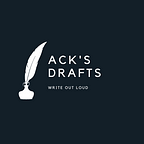A Community Council Could Have Created a Better Fire Recovery Process
Community-based feedback usually leads to a better process. But the county doesn’t seem to get that.
At yesterday’s Santa Cruz County Board of Supervisors meeting the county failed to reflect any of the CZU fire families' concerns regarding proposed changes to an ordinance requiring a geologic assessment that is delaying fire families trying to get the necessary permits to rebuild.
The assessment addresses the increased danger homes in debris flow zones may be facing post-fire. It also looks at pre-existing conditions that were not considered when the home was originally constructed due to the age of the structure (some of our homes pre-date the county’s permit process).
Understandably, the county doesn’t want fire survivors to rebuild only to find their homes carried away by a mudslide. But the solution places all of the potential liability and loss-of-value on the rebuilding property owner via a proposed title covenant that would indicate the home was rebuilt without those assessments and may be subject to geologic hazards. The solution also fails to take in any of the suggested amendments fire survivors called for at yesterday’s meeting.
Notably, the covenant would not be required of homes that did not burn but may now find themselves in post-CZU debris flow zones, which suggests that the amendment could actually create another impediment to rebuilding rather than clearing the path.
How Can A Council Help?
A community-led council creates a local forum to consider proposals that directly affect our communities.
A council of locally-elected individuals would set its own agendas. With the authority to agendize county ordinances, OR3 actions and proposals, and many other community initiatives a council meeting on a regular schedule (twice per month is typical) that is open to the public, could host conversations about proposed changes to receive feedback.
That feedback can then be used to shape policy language around an amended Title 16 that reflects the concerns of the community and helps to improve the rebuilding process.
How Would The Public Get Involved?
A council would function in a manner similar to the Board of Supervisors, a City Council, or the San Lorenzo Valley Water District Board.
It would set a regular schedule of meetings. It won’t post agendas a minimum of 72 hours in advance so the public would know what was going to be discussed.
Members of the public could submit comments and questions via email or by participating and commenting on matters on the agenda or during public comment period, just as they do in other forums today.
Why Would That Be Better?
The glib answer is — it couldn’t be worse.
But the truth is local engagement works. Communities use engagement mechanisms to their advantage in many ways. Planning Commissions are one tool often used to vet new construction proposals for the community’s reaction and feedback before going to the Board of Supervisors or the City Council for approval.
But the commissions the county currently supports are either too narrowly focused (e.g. the Childhood Advisory Council) or too broadly focused (e.g. Planning Commission, which looks at projects in the entire county) to allow for a focused discussion across a variety of topics and policy initiatives that specifically affect the San Lorenzo Valley.
A San Lorenzo Valley Community Council could feel that void.
You can learn more about the council HERE.
You can sign our PETITION asking Supervisor Bruce McPherson to work with the County Board of Supervisors to help create such a council and send it to the ballot for our community to decide how it wants to govern itself.
